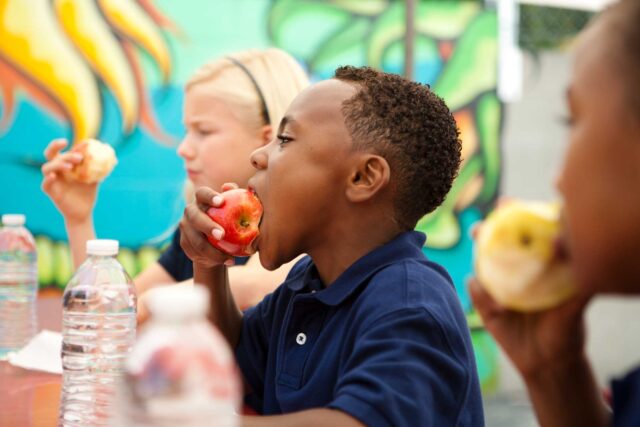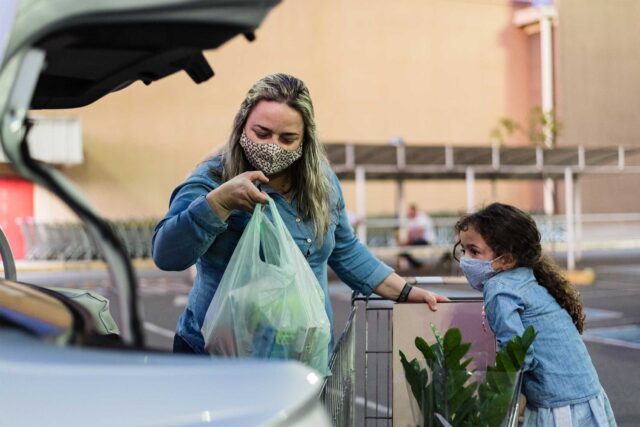The pandemic has led to economic hardships for many families, especially those who were already struggling financially, and disruptions to schooling have created additional burdens. While California districts have continued to provide meals during school closures, they are providing fewer meals than before the pandemic. Extending some of the new nutrition programs and flexibility offered this past year could help tackle longstanding food insecurity.
Since last summer, about a third of low-income families with children consistently report obtaining free food. Roughly a quarter said they received food from schools—the most common place to access food. This represents an improvement from last spring, when 19% reported receiving food from school. The increase—particularly during summer, traditionally a time when school meal provision drops sharply—is encouraging. A recent survey of school districts shows that most (70%) spent more on meal services in 2020–21 than in 2019–20, and nearly half (48%) reported an improvement in the provision of meal services in fall 2020. Despite this progress, 59% of students were eligible for free or reduced-price meals in the 2020–21 school year, suggesting that many eligible students are not getting these meals.
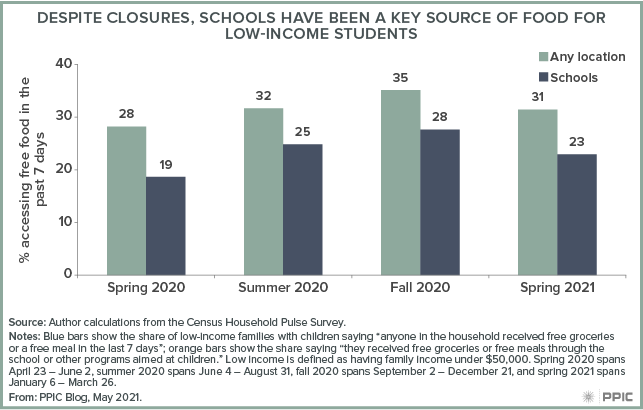
Schools are providing fewer meals than they were before the pandemic. The most recent federal data for fiscal year 2020 (October 2019 to September 2020) show a drop-off in the number of meals per school-age child served in California: 112 meals, compared to 129 meals in the previous year. Because fiscal year 2020 includes several months before the coronavirus outbreak, the drop-off from March 2020 onward is in truth larger.
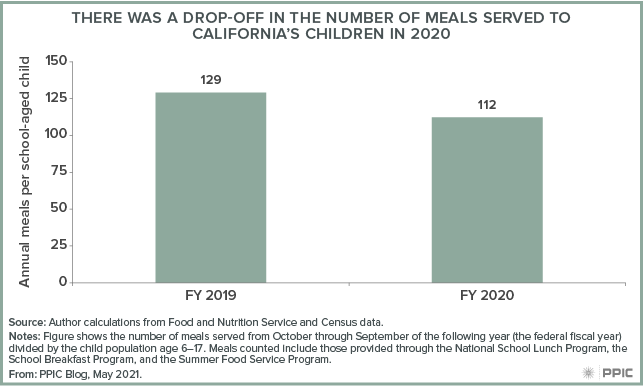
Despite efforts to improve food access, a full quarter of low-income families with children report having insufficient food in the past week. Latino and Black families are much more likely to report insufficient food than white and Asian families—reflecting disparate rates of underlying poverty and exposure to the pandemic-induced health and economic crises.
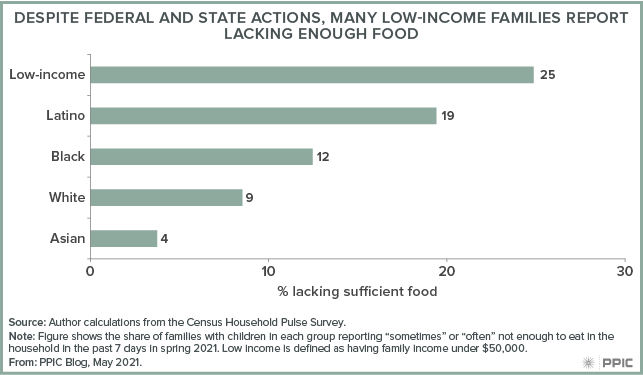
School meals are mainly federally funded, and schools have only been able to use federal funds to provide meals during closures due to waivers of normal regulations. With these waivers, schools can hand out pre-packaged meals and provide free meals to all children under 18 without checking eligibility, and parents can pick up meals without children present. Some waivers will become unnecessary once schools can serve meals on-site, but others may be beneficial to continue even after the pandemic is over.
Pandemic EBT (P-EBT) is another federally funded program that has provided grocery funds on debit cards to parents of low-income children to replace school meals they may have missed. The program has roots in summer pilot programs that demonstrated a sharp drop in food insecurity among children receiving the cards. The state sent $1.36 billion in P-EBT benefits to 3.7 million children between March and June 2020; a renewal of California’s program for the 2020–21 school year is awaiting federal approval.
Recent policy proposals at the state and federal levels recognize the significant role school meals play in children’s lives. Moving forward, policymakers will need to continue to consider which of the new programs and waivers would be beneficial to support children’s healthy eating and lower food insecurity even after the end of the pandemic.





